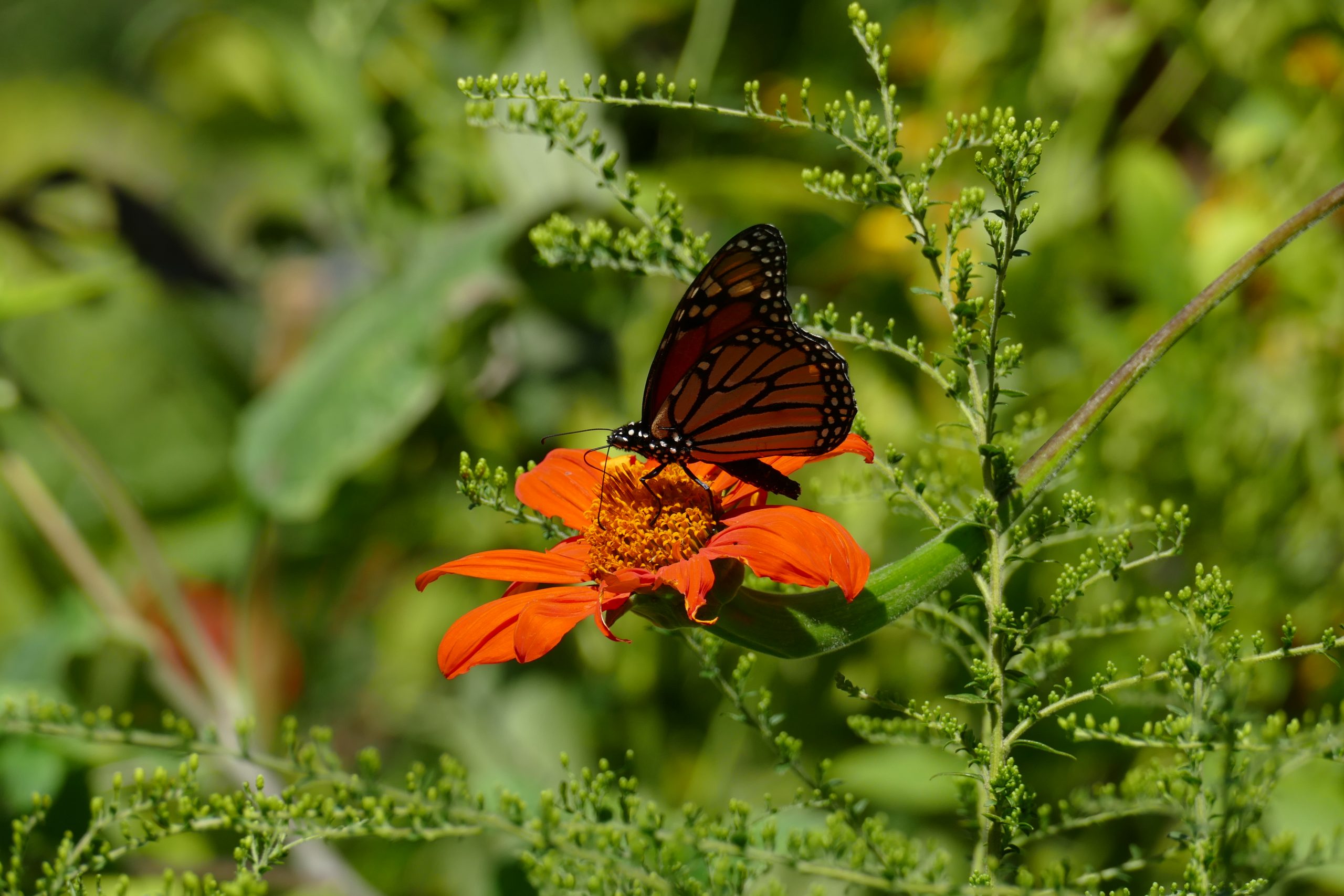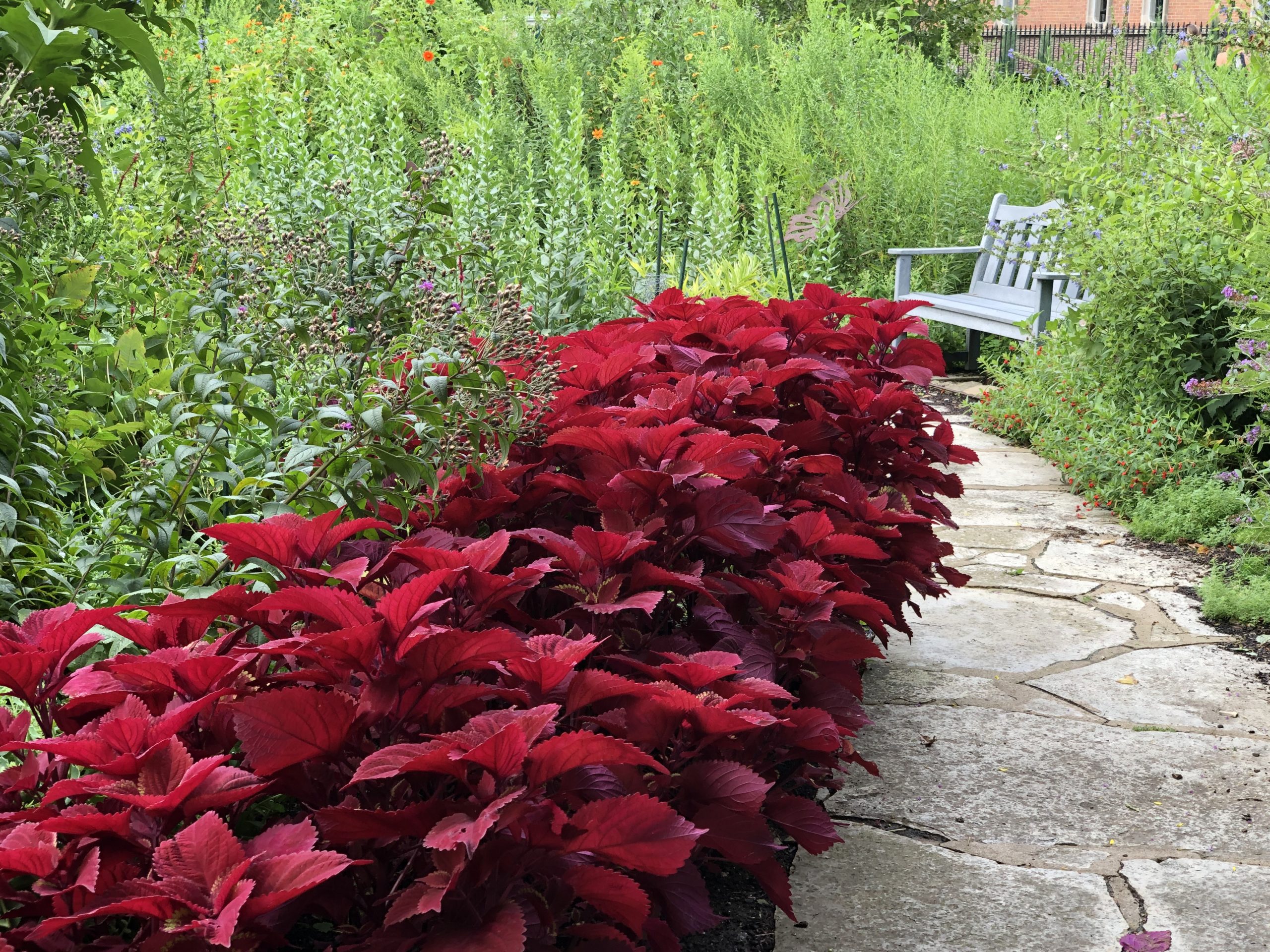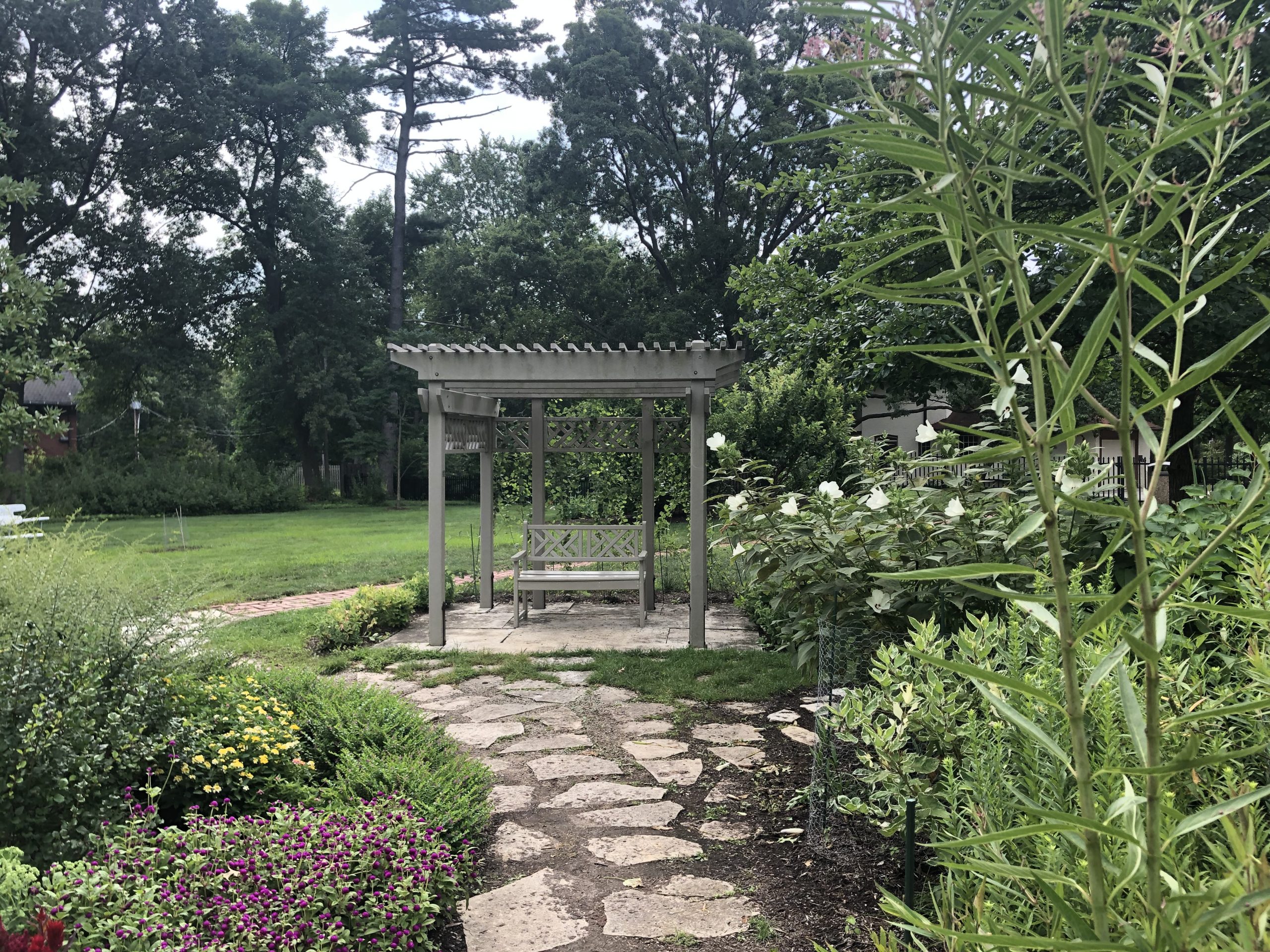Scene
Rooted in St. Louis: The Elizabeth Danforth Butterfly Garden
There is a lot to look forward to this summer, and Washington University’s Butterfly Garden should be on that list. Come the imminent summer planting, the garden transformation will be almost unbelievable. A plethora of vibrant blooms will pop up, making the garden the perfect peaceful resting place for students on campus.

A monarch butterfly rests on the flower of a Tithonia, or Mexican Sunflower. (Courtesy of The Elizabeth Danforth Butterfly Garden Committee)
Yet humans are only one species among many that gardeners hope to attract—bees, rabbits, owls, hummingbirds and of course, butterflies all stop by, and many make the garden their home. The Butterfly Garden is a garden with a purpose. Pretty as it is, each plant is selected with the entire ecosystem in mind.
Elena Maksaeva and Lee Anne Quatrano, co-chairs of the Butterfly Garden Committee, gave me a tour of the garden and elaborated on the myriad factors that go into planning each summer.
The Elizabeth “Ibby” Danforth Butterfly Garden began as a service project of the Washington University Women’s Club in 1996, to honor the eponymous wife of former chancellor William Danforth.
“25 years ago, it started with the idea of sustainable plants and native species that butterflies would like,” Quatrano said. “The Missouri Botanical Garden collaborated on the garden with us, and June Hutson designed the space and the plantings that would go in it.”
Much has changed since that planting. This year, a few of the oldest trees in the garden were removed—a hundred year old sick pin oak was taken down, as were all the ash trees, since St. Louis has been plagued by the Ash Borer beetle. These pests bore into the trees’ trunks, killing the wood and putting them at risk of collapse. Young trees were planted in their place, including a Gillian hybrid oak planted in honor of the retirement of Kent Theiling.
A small note on garden terminology—“perennial” refers to a plant that persists over more than a season, whereas an “annual” lasts just a year. The butterfly garden has both; Quatrano and Maksaeva estimated between 20-40% are annuals and in recent years the focus has shifted to perennials, as they require less labor over time.
This summer, milkweed is a focus. The pink and orange flowers attract Monarchs, who lay their eggs on the plants. “Milkweed is slightly toxic, and birds know that and so the birds don’t eat their caterpillars,” Quatrano explained.
The milkweed habitat has contributed to their recognition as a “Monarch Waystation” where Monarchs can rest and lay their eggs during the yearly migration. St. Louis lies on a major migration path, so the Butterfly Garden and other waystations are essential in absence of natural environments in urban areas.
Milkweed is just one of many factors that bring the butterflies to Wash. U. While milkweed is great for egg-laying Monarchs, they prefer other plants for food, some of which are difficult to find. The Butterfly Garden relies partially on Wash. U.’s greenhouse for some of the more rare varieties.
“Tithonia—[a] Mexican sunflower—is hard to find in the nurseries,” said Quatrano of one of the Monarch’s favorite flowers. “But if we give the seeds to the biology greenhouse, they will plant them for use. They are awesome… they have right now about six flats of things for us growing.”
Most humans would not think Tithonia very tasty, but swallowtail butterflies have different palates. Herbs, especially parsley, are the preferred food of swallowtail butterflies. Also included are mint, wild strawberry and onion.

Most annual plants like these will be installed during the “Big Dig” in preparation for the summer. (Courtesy of The Elizabeth Danforth Butterfly Garden Committee)
But taste alone is not enough for these picky insects; they also appreciate good presentation. Color is essential to attracting butterflies, who apparently prefer red, yellow and orange flowers.
Most of the annual planting is done at their yearly “Big Dig,” this year on May 4 from 9 a.m. to 1 p.m., where volunteers come to plant the summer annual garden.
Usually, volunteers are able to finish most of their planting during the Big Dig. For whatever is unable to get done, Wash. U. contractors from Focal Pointe, under Cody Azotea’s leadership, generously pick up the slack. Azotea himself has been a huge help; the co-chairs mentioned how he always has an opinion on the plantings.
Azotea has also helped consult on pollinators, which the garden hopes to attract. “A lot of times [garden volunteers] just mow everything down and won’t let the perennials come back up,” Quatrano said. They have changed this practice in order to provide more space for pollinators by allowing dead annual plant stalks to remain over the winter.
The garden is home to many creatures, and the gardeners work hard to keep an equilibrium between them. This delicate balance can easily be disrupted, as is evidenced by the recent bunny crisis.
Bunnies have always been the worst pest in the Butterfly Garden. “The bunnies eat everything,” Quatrano said. “So once we’ve planted baby things, we fence them all off.” This is a knock-on effect of the aforementioned oak tree removal, which eliminated a habitat for predatory birds. Without any birds to keep them in check, the bunnies run amuck eating everything they can find. The bunny problem has been a constant, and one that is still not totally resolved.
However, the gardeners are fighting back. Recently, they have installed an “owl platform” on another tree, meant to provide a habit for the predatory birds. No owls have made a permanent home there yet, but they have found a couple of decapitated rabbits, a sign that owls are scouting the area. It is a grizzly sight, but mother nature pulls no punches.

Plans have been made to expand the Butterfly Garden pergola and add new shade features in the garden. (Courtesy of The Elizabeth Danforth Butterfly Garden Committee)
The garden is now in the calm before the storm. Soon plants will be growing almost faster than the gardens can keep up with them. Quatrano explained the process of managing and designing in early summer: “[We try to] contain the sprawling part, so when it’s blooming it looks cohesive… [and] we try to group annuals and perennials together to make a statement.”
A particular challenge is the Goldenrod, loved by bees. The plant is faster growing than other flowers, so care is taken to separate it. Other specimens are rarer, such as the Kankakee Mallow, a wildflower only found naturally on one Kankakee river island in Illinois.
The garden is constantly evolving. Each year after summer passes the garden committee takes stock of which plants worked and which did not, and adjust their plans accordingly. In the future, they would love to install a water feature, to provide a more permanent water source for the butterflies than the water now collected on flat rocks throughout the garden.
The Butterfly Garden on campus is criminally underused—it is a great study spot, or perhaps a sanctuary for meditation between classes. The gardeners spend their time crafting it not only for the insects and birds and butterflies, but also for the humans of Wash. U. to come hang out with all the critters and flowers that call the Butterfly Garden home.
Other articles from the Rooted in St. Louis series:
Rooted in St. Louis: Spring, hope and our favorite trees on campus
Rooted in St. Louis: The Ethnobotanical Work of Professor Memory Elvin-Lewis
